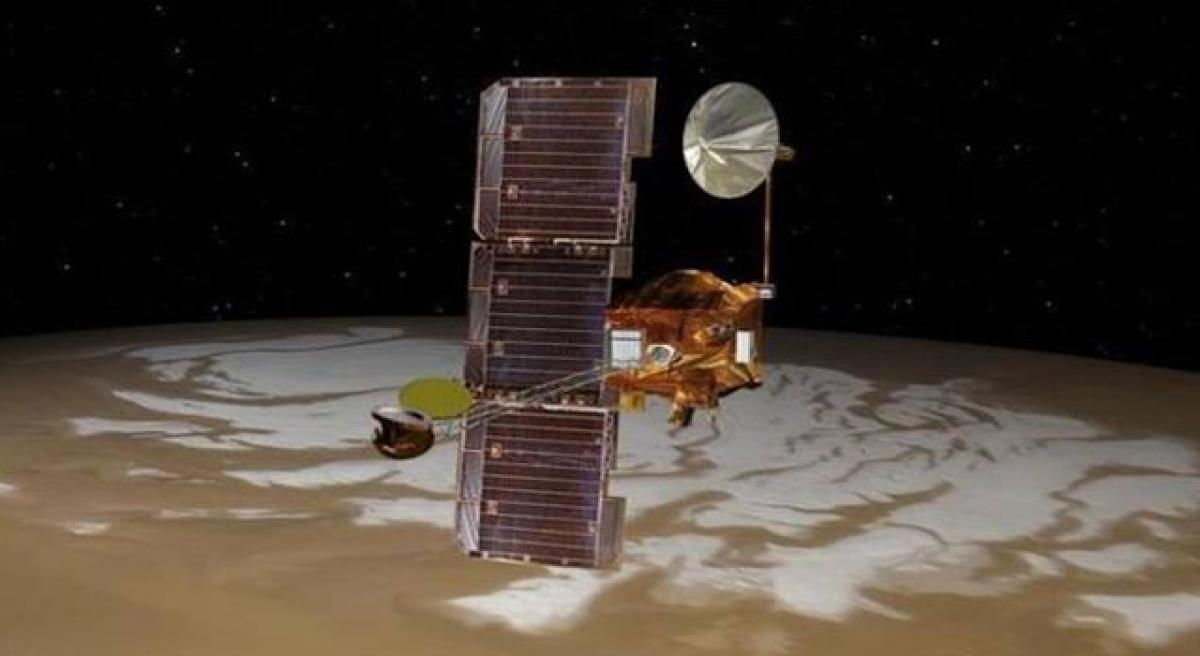Live
- Blitzkrieg begins at PB Siddhartha
- US flays India’s 150% alcohol tariff amid trade concerns
- Farmers urged to focus on floriculture for profits
- Officials brace to meet MGNREGS targets
- Poor urged to make use of addl financial help
- ‘Conduct’ digital crop survey accurately
- Digital Arrests: Centre blocks 3,962 Skype IDs, 83,668 WhatsApp accounts
- US Veep Vance, wife Usha to visit India this month
- Personal loss spurs‘Seva’ of the needy
- Registration for Agniveer recruitment begins

The satellite made by the students is named “SWAYAM”, a Sanskrit word meaning Self. Notably, Pune is known as Maharashtra’s Cultural Capital but it is also famous for the educational institutions it houses. Namely, the College of Engineering established in 1854, is one of the oldest in Asia.
The satellite made by the students is named “SWAYAM”, a Sanskrit word meaning Self. Notably, Pune is known as Maharashtra’s Cultural Capital but it is also famous for the educational institutions it houses. Namely, the College of Engineering established in 1854, is one of the oldest in Asia.
The college was again in the limelight on the day of the rocket launch which carried a satellite built by COEP students. The first such incident for the college and the country.
Students of the College of Engineering, Pune (COEP), achieved a rare feat by creating and sending a satellite into space
Pertinently, the idea was conceived in 2008 where by the IIT asked COEP students to develop a Ground Station for a satellite. This triggered the desire to build a satellite by COEP pupils themselves.
In fact, those involved in the project were studying in the second year of their engineering course. Moreover, lack of experience did not deter them and they formed a small team which gave a proposal to the college. In January 2009 the proposal was accepted and students started work.
Highlights:
- Swayam is the first-of-its- kind bi-directional communications satellite
- The satellite has ingenious passive stabilasition system
- It will be at 500 to 800km from earth
- Students bagged Luigi Napolitano Award
They finished the first draft of technical details within six months which were accepted by ISRO and asked them to complete the concept design in two years. Happily, this was also completed in the given time frame.
Hence the satellite’s components were selected carefully to fit its design and size. However, its stabilisation was one major problem as conventional magnetorquers (or magnetic torque-a- system to stabilise a satellite built from electromagnetic coil) are bulky and consume more power.
So, the COEP developed an ingenious passive stabilisation system using different kind of rods and magnets. Significantly, this Passive Attitude Control System of SWAYAM is not only the first of its kind in India but also so far the only one.
Further, SWAYAM will synchronise itself with the magnetic field of the Earth to stabilise itself in its prescribed orbit. This technology is also being used for the first time in India and will keep the satellite at a distance of 500 to 800 Kilometers from the Earth. Wherein, its antenna will be directed towards the Earth to receive and send data and signals.
It stands to reason that from its very inception, the college supported the group at every stage and provided crucial infrastructure and advice too. The total cost to build SWAYAM is Rs 50 lakh. Blissfully, the environmental tests on the Qualification model were successfully completed in June 2014.
The team also fruitfully cleared the Critical Design Review in Bangalore in September 2014. Additionally, all the sub-systems were approved by ISRO scientists and a ‘go ahead’ given for the flight model. Credit to them that in one year the final product was ready to deliver.
Importantly, SWAYAM is basically a bi-directional communication-cum- navigation satellite. Though it will not receive and send any voice or pictures for telephones and TVs it would help track airplanes and ships all over the world. Along-with other base stations established in and outside India for the purpose.
This is called ‘Nano’ or ‘Pico’ satellite. The satellite might be small and the experiment may be termed as even smaller compared to developments taking place in the field of Space technology world over.
But it has given tremendous boost to the confidence of Indian students, particularly students of engineering stream.
Specially, against the backdrop of the COEP having no Aerospace Technology department and yet the students have produced a fully functional satellite. A great accomplishment in itself given that satellite technology is a very complex one.
But our students have demonstrated that they can excel in it too. Till date, ISRO has sent 20 satellites in a single launch and became the third nation to achieve such a feat. Many of these were satellites from other nations, thus enabling ISRO earn valuable foreign currency
Indeed, after its missions to Moon and Mars (Chandrayan and Mangalyan respectively) and having emerged as a major force in the space technology, ISRO decided to join hands with an engineering college. Clearly, such collaborations will give students in India a chance to hone and test their skills.
In a milieu whereby the country has always been criticised for lack of research, the COEP students have answered this by creating SWAYAM. Another upside was that research papers on it were presented or published in Italy and South Africa.
Student of the college was honoured with the Luigi Napolitano award thereby becoming the first Asian to receive it. SWAYAM’s launch is also a moment of pride in the 152 year’s history of COEP. An instant of realisation of their true ‘Self’ for Youth of India.

© 2025 Hyderabad Media House Limited/The Hans India. All rights reserved. Powered by hocalwire.com







